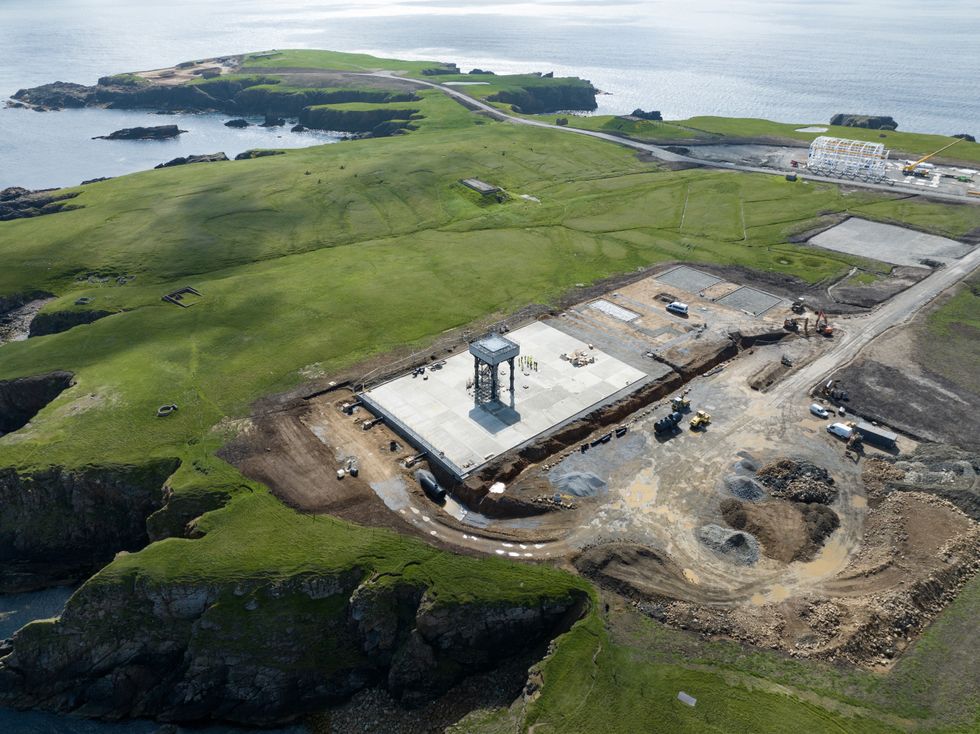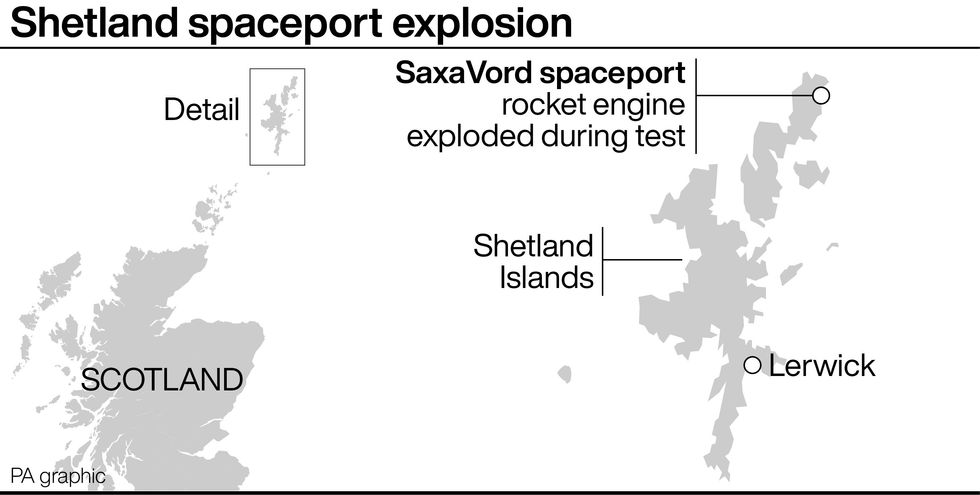Shetland’s new spaceport could be the first in Europe to send rockets into space after being granted the UK’s first vertical launch license from the Civil Aviation Authority (CAA).
The privately owned SaxaVord Spaceport, run by German firm Rocket Factory Ausberg (RFA), made headlines last year after a nine-engine rocket exploded during a series of trials on the launch pad.
Despite the setback, RFA has now been granted permission to send multiple rockets into space every year after clearing the last significant regulatory hurdle.
In addition to the new launch license, the regulator has already granted the site its spaceport license and a range control license.

SaxaVord spaceport in Unst on the Shetland Islands
PA
Now the Shetland spaceport has met all the regulatory requirements to operate as a commercial spaceport, with plans to work up to launching 30 rockets into space every year.
Their launcher, ‘RFA One’ is a 30m tall rocket blasting into space with the thrust from nine engines and is capable of carrying satellites and other small payloads up to 1,300kg into space.
The next test launch is already fully booked with a number of German companies lining up to send their shipments into orbit.
The company, who applied for the license back in February, had planned their initial launch last year, which was pushed back following the test site explosion in August.
LATEST DEVELOPMENTS:

Position of Shetland spaceport
PA
Chief commercial officer Jorn Spurmann said securing the launch licence is a “groundbreaking moment for RFA and for Europe’s space industry”.
He said: “Securing the first-ever launch licence outside [the European Space Agency]’s established site in Kourou is not just a regulatory milestone – it’s a powerful endorsement of our technical excellence and a turning point for European space innovation.
“This licence marks Europe’s bold step toward independent, competitive, and sustainable space access.”
Six more organisations are looking to launch from the Shetland site in the years ahead.
Among them, emerging UK space company Orbex plans on moving their operation from Sutherland to Shetland, while Scottish firm Skyrora are awaiting licenses of their own to launch from Shetland.

The site is a former RAF base
PA
If Skyrora’s license application is successful, its ‘Skylark L’ craft could launch from SaxaVord before the end of 2025, with a successful test flight leading to plans for up to 16 launches a year.
Despite the competition heating up, RFA’s tests and licenses to date put it furthest along the road and the most likely to succeed in the UK’s first vertical space launch.
Rob Bishton, chief executive of the CAA, said: “This is a new era for aerospace and granting the first vertical launch licence from UK soil builds towards a historic milestone for the nation.
“This licence is the culmination of extensive hard work behind the scenes to put appropriate safety and environmental measures in place before launch.
“Through effective licensing and regulation, we are enabling the expanding the space sector to reach new heights.”
Scotland’s commercial space race has long been under the gaze of a watchful Scottish Government and following the delivery of RFA’s launch license, Business Minister Richard Lochhead congratulated the team, calling it a “momentous occasion for Scotland’s space sector”.
He said: “Not only can Scotland manufacture satellites, but now we are well on our way to launching them and providing expert analysis of the data they subsequently provide.
“I congratulate the SaxaVord team in Shetland and Rocket Factory Augsburg, both of which are now on course to host the first commercial launch of its kind in Europe.
“More broadly I want to pay tribute to Scotland’s space entrepreneurs who have made this country one of Europe’s leading space nations.
The Business Minister concluded with assurances the Scottish Government and enterprise agencies were committed to supporting the sector, “helping to unlock its vast economic potential”.